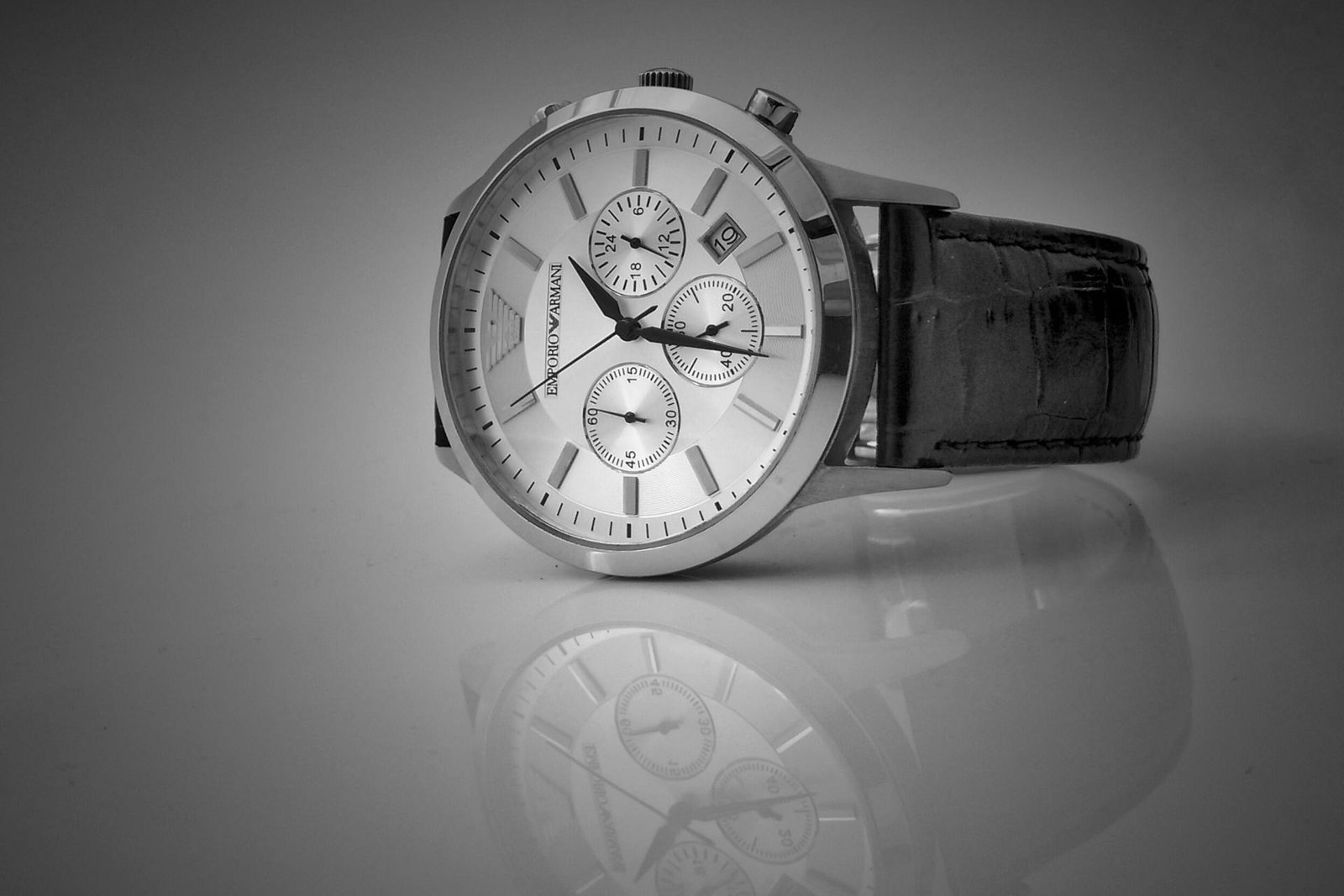The Pakistani Rupee (PKR) has recently exhibited an unusual level of stability in its exchange rate, drawing the attention of financial analysts and economic experts worldwide. This article delves into the latest trends in the valuation of PKR, exploring the factors contributing to its unprecedented steadiness, the implications for the economy, and the perspectives of investors. We scrutinize statistical data, economic indicators, and expert opinions to provide a comprehensive analysis of the current situation and future outlook of Pakistan’s currency.
Key Takeaways
- Recent trends in PKR valuation show remarkable stability, with minor fluctuations drawing intense scrutiny from financial experts.
- A combination of lower interest rates, declining inflation, and government measures has bolstered investor confidence, contributing to the currency’s steadiness.
- Despite the stable exchange rate, concerns remain about Pakistan’s economic fundamentals and the potential risks underlying the apparent calm.
- The stability of PKR has positively impacted investor sentiment, yet it has also sparked a debate on the health of the Pakistani economy.
- Future outlook for PKR includes predictive forecasting and government strategies aimed at sustaining stability amidst global economic challenges.
Table of Contents
ToggleThe Latest Trends in Pakistani Rupee Valuation:
Summary of Recent PKR Performance
In my recent observations, I’ve noted an unprecedented stability in the PKR exchange rate, which has become a focal point of discussion among financial experts. The Pakistani Rupee has exhibited minimal fluctuations, maintaining a near-constant value over the past few days. For instance, on April 5th, 2024, the PKR’s exchange rate remained remarkably stable, with only a slight dip from 0.0049 to 0.00487, showcasing a resilience that is both noteworthy and puzzling.
“The stability of the PKR is not just a statistical anomaly; it reflects a broader sentiment of confidence among investors and hints at potential shifts in economic policies”
This stability has implications for both domestic and international perceptions of Pakistan’s economic health. While some may view this as a sign of strength, others suggest that such rigidity could indicate deeper economic issues that warrant careful analysis. The coming days are crucial for understanding the true nature of this stability and its long-term impact on the economy.
Here’s a snapshot of the PKR’s recent performance:
- Opening rate: 0.0049
- Closing rate: 0.0049
- Daily high: 0.0049
- Daily low: 0.00487
- Overall stability: Remarkably constant
Statistical Measures of PKR Valuation
In my analysis of the Pakistani Rupee’s recent performance, I’ve observed a remarkable consistency in its valuation. The mean exchange rate has been tightly clustered, indicating a period of low volatility. This is further supported by a low standard deviation, which quantifies the minimal spread of values around the mean.
To illustrate, consider the following data from April 5th, 2024:
| Metric | Value |
|---|---|
| Mean Exchange Rate | 0.0049 |
| Standard Deviation | Minimal |
| Opening Rate | 0.0049 |
| Closing Rate | 0.00487 |
| Daily High | 0.0051 |
| Daily Low | 0.0047 |
| Volume of Top Stocks | Varied |
“The stability of the PKR is not just a statistical anomaly but a reflection of the current economic sentiment. The narrow range between the opening and closing rates on a given day exemplifies the newfound steadiness in the currency market”
This stability is not isolated to the currency market but is echoed in the stock volumes of leading companies. For instance, on April 12th, Pakistan International Airlines Corp (PIAA) reported a significant stock volume of 47,200,500, with no change in value, mirroring the PKR’s steadiness. Such patterns are indicative of broader market confidence and warrant a closer examination of the underlying economic mechanisms.
Trend Analysis and Expert Opinions
In my analysis of the recent performance of the Pakistani Rupee (PKR), I’ve observed a remarkable period of stability that has caught the attention of financial experts worldwide. The consensus among analysts is that this stability may set a new benchmark for evaluating currency strength.
Experts suggest that the PKR’s stability is not an isolated phenomenon but a reflection of broader economic trends. The International Monetary Fund’s (IMF) recent statements about Pakistan seeking a follow-up loan program and the expected further drop in inflation in 2024 are indicative of a cautiously optimistic economic outlook.
“The sustained stability of the PKR is a testament to the effective economic measures and policies implemented by the government. This stability is crucial for maintaining investor confidence and fostering a conducive environment for economic growth”
While the PKR’s performance is encouraging, it is essential to remain vigilant. The global economic landscape is ever-changing, and external factors such as oil price fluctuations and international trade dynamics can have significant impacts on currency valuations.
Economic Indicators Influencing PKR Valuation
Interest Rates and Inflation Dynamics
In my analysis of Pakistan’s economic landscape, the interplay between interest rates and inflation has been particularly noteworthy. The Central Bank of Pakistan’s base borrowing rate stands at a significant 22.00% as of January 2024, reflecting a tight monetary stance aimed at curbing the rampant inflation, which was reported at 28.3% year-over-year in the same month. This high-interest rate environment is a double-edged sword; while it may help temper inflation, it also increases the cost of borrowing, potentially stifling economic growth and investment.
“The dynamics of interest rates and inflation are critical in understanding the economic pressures faced by households and businesses alike. With inflation remaining persistently high, the real incomes of the population are under severe strain, particularly affecting those below the poverty line”
The following table encapsulates key economic indicators that shed light on the current state of Pakistan’s economy:
| Indicator | Value (January 2024) |
|---|---|
| Inflation (CPI) | 28.3% YoY |
| Base Borrowing Rate | 22.00% |
| Population Below Poverty Line | 35.7% (<$3.20/day) |
It is imperative to consider these figures in the context of the broader economic challenges that Pakistan faces. The relationship between money supply and inflation is a subject of ongoing debate, with some arguing that changes in money supply, interest rates, and unemployment do not significantly impact inflation dynamics in the short term. However, the current high inflation rates suggest that this relationship may be more complex and warrants further scrutiny.
Foreign Exchange Rate Trends
In my observation of the Pakistani Rupee (PKR), I’ve noted a period of unprecedented stability in its exchange rate, particularly against the US dollar. This stability is intriguing, given the currency’s historical volatility. For instance, a recent day’s trading showed a mere loss of 0.61% in value, with the exchange rate hovering around a consistent level throughout the day. Such steadiness is atypical in the fluctuating world of foreign exchange, sparking considerable debate among analysts.
The strength of a country’s exchange rate is influenced by a myriad of factors, including economic indicators, political stability, and market sentiment.
The following table illustrates the average exchange rates of the US dollar to PKR over the past years, reflecting the currency’s trajectory:
| Year | US$ to PKR |
|---|---|
| 2021 | 160.02 |
| 2022 | 177.45 |
| 2023 | 248.04 |
Looking ahead, projections such as those from Trading Economics suggest that the Pakistan Interest Rate may trend around 19.00 percent by 2025. This forecast could have significant implications for the PKR valuation and warrants close monitoring.
Governmental Measures and Economic Policies
In my assessment of the Pakistani Rupee’s recent stabilization, I have observed that the government’s economic policies have played a pivotal role. The minister’s affirmation of the ADB’s report highlights the effectiveness of these policies under the leadership of Prime Minister Shehbaz Sharif. The government’s strategy has been multifaceted, focusing on maintaining fiscal discipline while promoting economic recovery.
To illustrate the government’s approach, consider the following measures:
- Articulating and implementing a clear strategy for economic recovery
- Constraining fiscal expenditures and targeting new expenditures carefully
- Maintaining a tight monetary stance and a flexible exchange rate
- Advancing critical structural reforms, particularly in the energy sector
The Government continues to face a challenging macroeconomic environment, yet it remains committed to macroeconomic stabilization and structural reforms. Significant risks such as policy uncertainty, external shocks, and financing needs are being managed with prudence.
The steadfast implementation of these policies is essential for short-term stability and robust economic recovery over the medium term. The government’s ability to navigate through policy uncertainty and external conditions will be crucial in sustaining the PKR’s valuation.
Investor Sentiment and Market Confidence
Impact of Stabilization on Investor Confidence
The recent stabilization of the Pakistani Rupee (PKR) has been a significant factor in shaping investor confidence. Investors are keenly observing the PKR’s performance, as it reflects the underlying economic health and the effectiveness of governmental policies. The stabilization has been perceived as a positive signal, suggesting a more predictable and less volatile investment environment.
However, it’s important to note that stabilization does not equate to immunity from future volatility. Investors remain cautious, understanding that a premature rate cut could threaten the rupee’s stability, which would likely negatively impact investor confidence in the country’s macroeconomic outlook. In its outlook for 2024, JS Global labeled the Pakistani rupee as a currency that will require greater watchfulness and proactive management of the associated risks by market participants.
“The stabilization of the PKR is a delicate balance that hinges on continued prudent economic management and the ability to navigate external shocks”
While the current stability is welcomed, investors are also weighing the potential challenges that lie ahead. They are particularly mindful of sector liquidity constraints and the need for sound economic management to maintain market sentiment. This includes a clear strategy for economic recovery, targeted fiscal expenditures, and adherence to structural reforms, especially in the energy sector.
Risks and Opportunities for Existing and Potential Investors
As I delve into the landscape of investment in Pakistan, it’s clear that the stabilization of the PKR offers a dual-edged sword of risks and opportunities. On one hand, the liberalization of business regulations since 1999 has fostered an environment conducive to foreign investment, with no restrictions on the inflow of capital and the possibility of 100% equity participation in most sectors.
However, the challenges that potential investors face are not to be underestimated. Regulatory risk, taxation complexities, and other hurdles are part of the investment terrain in Pakistan, much like in other developing economies. It is essential for investors to be vigilant and proactive in managing these risks while seizing the opportunities that arise.
“The introduction of sophisticated financial products, such as over-the-counter (OTC) derivatives, necessitates the implementation of robust safeguards. Both market-makers and customers must adopt these measures to ensure the stability and growth of their investments”
The table below succinctly captures the key considerations for investors in Pakistan:
| Aspect | Opportunity | Risk |
|---|---|---|
| Regulatory Framework | Liberalized business regulations since 1999 | Regulatory risk and taxation issues |
| Capital Flow | No restrictions on inflow; 100% equity allowed | Challenges in doing business |
| Profit Remittance | Unlimited remittance of profits and dividends | Economic fundamentals and global impact |
In conclusion, while the PKR’s recent performance may raise its profile as an appealing destination for foreign investment, it is critical for investors to remain watchful. The days ahead will likely reveal more about the resilience or potential issues within the PKR’s valuation.
Comparative Analysis with Regional Currencies
In my analysis of the Pakistani Rupee’s (PKR) valuation against regional currencies, I’ve observed a fascinating trend. The PKR has shown a remarkable resilience in the face of regional economic fluctuations. This stability is not only a testament to the robustness of Pakistan’s monetary policies but also reflects the nuanced interplay of market forces in South Asia.
To illustrate, let’s consider the PKR’s performance against the Iranian Rial (IRR). As of April 12, 2024, the exchange rate was 1 PKR = 151.268405 IRR. This exchange rate is indicative of the broader economic dynamics at play, which include trade balances, geopolitical relations, and investor sentiment.
“The comparative strength of the PKR in this context is not an isolated phenomenon; it is mirrored across various pairings with regional currencies, suggesting a sustained momentum in Pakistan’s economic trajectory”
While the PKR’s stability is commendable, it is crucial to remain vigilant. Regional currencies are subject to a myriad of factors that can swiftly alter their course. Here’s a snapshot of how the PKR stacks up against a selection of regional currencies:
| Currency | Exchange Rate (PKR) |
|---|---|
| IRR | 151.268405 |
| TRY | 0.12 |
| SAR | 0.014 |
| INR | 0.30 |
This table is a simplified representation, yet it underscores the importance of continuous monitoring and analysis to maintain a comprehensive understanding of the PKR’s relative strength.
Potential Challenges and Underlying Economic Health
Bearish Perspectives on PKR Stability
While the recent stability of the Pakistani Rupee (PKR) has been a subject of fascination among analysts, I remain cautious in my optimism. The unusually rigid exchange rate may be symptomatic of deeper economic issues that warrant a closer examination of Pakistan’s economic fundamentals. Despite the apparent investor confidence, the steadfastness of the PKR could be misleading, as it might not fully reflect the underlying economic health.
“The strength of a country’s exchange rate is typically influenced by a myriad of factors, including interest rates, inflation, and the overall economic condition. The current stability, therefore, raises questions about the true state of these variables in Pakistan”
Here is a snapshot of the PKR’s performance on a particularly stable day:
| Time of Day | Exchange Rate (PKR to USD) |
|---|---|
| Midnight | 0.0049 |
| Seconds Later | 0.00487 |
This table illustrates the minor fluctuations within a 24-hour period, which is atypical for a currency in a developing economy. The bearish perspective suggests that such steadiness could be a facade, potentially hiding economic fragility. It is essential to remain vigilant and consider the possibility that the PKR’s stability might not be as robust as it appears.
Assessment of Pakistan’s Economic Fundamentals
I have observed that Pakistan’s journey towards economic stability is fraught with complexities. The nation has shown resilience in the face of macroeconomic challenges, yet the path ahead is steeped in uncertainty. Pakistan’s economic fundamentals are a mixed bag, with recent progress in some areas overshadowed by persistent vulnerabilities.
The country’s real GDP growth has seen a contraction, indicative of the underlying economic pressures. The fiscal year FY23 witnessed a decline of 0.2 percent year-over-year, a stark contrast to the growth in the preceding years. This downturn reflects the accumulated economic imbalances, such as high fiscal deficits and increasing debt, which have eroded Pakistan’s policy buffers. These challenges are compounded by external shocks, including catastrophic floods and high world commodity prices.
“Despite these adversities, Pakistan is committed to economic liberalization, including the privatization of government corporations, to foster foreign investment and curb budget deficits. However, the nation still contends with a rapidly growing population, high illiteracy rates, political instability, and a substantial foreign debt burden”
Here is a snapshot of Pakistan’s economic indicators:
| Indicator | FY21 | FY22 | FY23 |
|---|---|---|---|
| Real GDP Growth (%) | 5.8 | 6.2 | -0.2 |
| Fiscal Deficit (% of GDP) | 6.1 | 4.9 | 7.7 |
| Foreign Debt (USD) | $115.695 billion | $130.433 billion | $131.159 billion |
The table above succinctly encapsulates the recent performance and challenges of Pakistan’s economy. It is imperative to recognize that while the country is navigating through a ‘Nazuk Mor’ or delicate turn, the potential for reform and growth remains.
External Factors Affecting the Economy and Currency
The valuation of the Pakistani Rupee (PKR) is not only influenced by domestic economic activities but also by a myriad of external factors. Pakistan, which imports much of its food and fuel, consistently records large trade deficits. This situation is exacerbated by elevated commodity prices, which strain the foreign exchange reserves and impact the PKR valuation.
The global economic environment plays a significant role in shaping the PKR’s strength. Unforeseen increases in global commodity prices and interest rates pose significant downside risks. These external conditions can lead to a challenging macroeconomic environment, necessitating a coherent and timely policy response from the Government.
“The Government continues to face a challenging macroeconomic environment while maintaining progress towards macroeconomic stabilization and critical structural reforms”
Here is a brief overview of the external factors that influence the PKR valuation:
- Foreign trade dynamics, including exports and imports
- External imbalances and financing needs
- Economic aid and remittances
- Foreign acquisitions, mergers, and investment trends
Each of these elements requires careful monitoring and strategic management to ensure the stability of the PKR in the face of external pressures.
Future Outlook for the Pakistani Rupee
Predictive Models and Forecasting
In my exploration of the latest pakistan rupee news, I’ve encountered a variety of predictive models that aim to forecast the future valuation of the Pakistani Rupee (PKR). These models often incorporate a range of economic indicators, from inflation rates to balance of payments, to estimate future trends.
“The accuracy of these models is paramount for investors and policymakers alike, as they provide a glimpse into the potential trajectory of the PKR”
Here is a brief overview of the key components typically included in these models:
- Historical exchange rate data
- Inflation differentials
- Interest rate trends
- Trade balance figures
- Political stability indicators
- Global economic forecasts
While no model can guarantee absolute precision, they serve as essential tools for developing strategies to navigate the complexities of currency markets. The ongoing analysis of these models, coupled with real-time pakistan rupee news, ensures that stakeholders are well-informed and able to make proactive decisions.
Government and Central Bank Strategies for Sustained Stability
In my assessment of the strategies employed by the Government and the Central Bank of Pakistan, it is evident that a multifaceted approach is being taken to ensure the sustained stability of the Pakistani Rupee (PKR). The exchange rate plays a crucial role in stabilizing Pakistan’s economy. Within this section, we extensively explore various facets such as exchange rate flexibility, fiscal restraint, and structural reforms.
The Government’s commitment to macroeconomic stabilization is underscored by its efforts to manage significant downside risks. These include policy uncertainty, global commodity price fluctuations, and domestic and external financing needs. To navigate these challenges, a clear strategy for economic recovery is being articulated and implemented, with a focus on maintaining a tight monetary stance and a flexible exchange rate.
The steadfast implementation of broader fiscal and economic reforms is crucial for robust economic recovery over the medium term.
Furthermore, the Central Bank’s role in crafting a path for economic stability is highlighted by its adherence to a tight monetary policy and the management of sector liquidity constraints. The recent Stand-By Arrangement (SBA) with the IMF has also played a pivotal role in restoring exchange rate flexibility and easing import controls, contributing to some recovery in foreign exchange reserves and economic growth.
The Role of International Trade and Relations
The valuation of the Pakistani Rupee (PKR) is intricately linked to the dynamics of international trade and relations. Pakistan’s participation in global markets, particularly through exports like textiles and agricultural products, significantly influences the currency’s strength. The balance of trade, determined by the ratio of exports to imports, is a critical factor in the PKR’s valuation.
Pakistan’s involvement in various international trade organizations, such as the World Trade Organization (WTO) and the South Asian Free Trade Area (SAFTA), underscores the importance of trade policies and agreements in shaping the economic landscape. These memberships facilitate market access and can lead to increased foreign investment, which in turn supports the PKR.
“The appreciation in retail trade and depreciation in other sectors have a nuanced impact on the rupee, reflecting the complex interplay between different segments of the economy”
Remittances also play a vital role, providing a steady inflow of foreign currency that bolsters the PKR. Economic aid and foreign direct investment (FDI) are additional elements that contribute to the currency’s stability by enhancing the country’s financial reserves and supporting development projects.
Navigating the Tides of Change: The PKR’s Remarkable Stability
The Pakistani Rupee’s (PKR) recent stability amidst a turbulent global economic landscape is a testament to the resilience and potential underlying Pakistan’s economy. Despite facing significant challenges, including political tensions, economic imbalances, and the aftermath of natural disasters, the PKR has demonstrated an unexpected steadiness that has piqued the interest of investors and financial analysts alike. This stability, attributed to factors such as lower interest rates, declining inflation, and strategic central bank interventions, has bolstered investor confidence and reduced market risks. While some experts express caution, suggesting that the rigidity of the exchange rate may indicate deeper economic issues, the current trend offers a glimmer of hope for Pakistan’s economic future. As the country continues to navigate through economic distress, the PKR’s valuation trends serve as a critical indicator of the nation’s financial health and the effectiveness of its policy measures.
Frequently Asked Questions
What has contributed to the recent stability of the Pakistani Rupee?
Factors such as lower interest rates, declining inflation, and governmental measures have contributed to the stabilization of the currency, leading to stronger investor confidence.
How have investors reacted to the PKR’s stability?
Existing investors have shown increased confidence due to the lower volatility and reduced market risks associated with the stable exchange rate.
What are some potential risks to the PKR’s current stability?
Potential risks include underlying economic challenges, political tensions, and global market uncertainties that could affect the currency’s valuation.
What is the significance of the PKR’s stability on April 5th, 2024?
On April 5th, 2024, the PKR exhibited an impressive stability for nearly 24 hours, with only minor fluctuations, drawing the attention of financial analysts.
How is the government of Pakistan addressing economic challenges?
Despite economic crises, the government is assuring that Pakistan will not default and is taking measures for currency stabilization and ensuring sufficient fuel reserves.
What is the outlook for Pakistan’s economy and the PKR?
While Pakistan is making progress towards macroeconomic stabilization, substantial reforms are needed for faster growth, and the PKR’s future valuation will depend on these efforts.
READ MORE ARTICLES:
New Currency Notes Pakistan 2024
What’s the Wheat Procurement Policy for 2024? Unpacking Next Year’s Support Price











